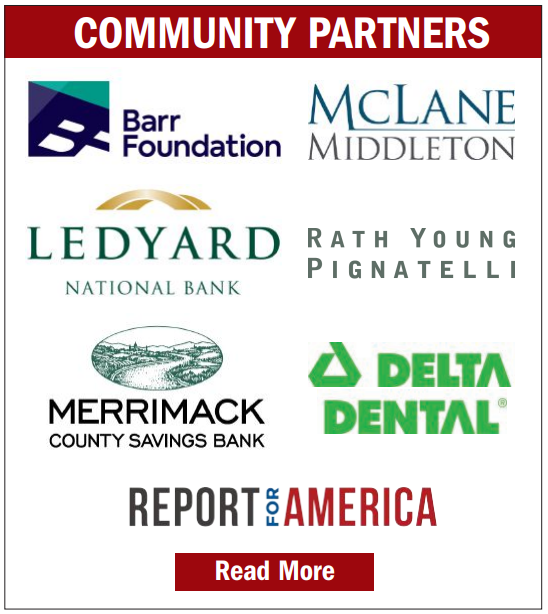Opinion: PBM reform must be a priority in Congress

Pixabay Pixabay
| Published: 09-24-2024 10:18 AM |
Ned Helms of Concord is former Commissioner of HHS and founding director of the Institute for Health Policy at UNH.
As someone with over three decades of experience in healthcare, I’ve witnessed significant changes in our industry. We’ve made enormous strides thanks to the Affordable Care Act, which insured millions for the first time, and the Inflation Reduction Act which cut costs for millions more. However, we must do more to address one of the main culprits driving the unaffordability of health care: rising out-of-pocket expenses for prescription drugs.
The stark reality is that roughly 3 in 10 Americans with health insurance face financial barriers to getting the care they need, largely due to high out-of-pocket costs and coverage issues. This is particularly alarming given that drug prices and overall drug spending are growing at historic lows. Net prices for brand medicines increased by an average of just 1% in 2021, due to rebates and other payments made by manufacturers that lower the cost of medicines. Yet patients aren’t seeing these savings. Instead, out-of-pocket costs for brand-name drugs rose by 50% between 2014 and 2022.
The largest culprits behind this crisis are insurance companies and their Pharmacy Benefit Managers (PBMs). Originally created to manage prescription drug claims for employers and other stakeholders, PBMs have evolved into profit-driven entities that often prioritize their bottom line over patient care.
The PBM market has undergone extreme consolidation, with just three companies (OptumRx, CVS Caremark, and Evernorth) now controlling 80% of the market. Each is vertically integrated within major healthcare conglomerates that include insurance companies. This consolidation has given PBMs unprecedented power over drug pricing and access. In the last decade, their profits have more than tripled, increasing from $6.3 billion in 2012 to $27.6 billion in 2022.
PBMs operate using a complex system of rebates, discounts, and fees that mask their true costs for prescriptions. In 2022 alone, pharmaceutical manufacturers paid the PBMs that buy from them $256 billion in rebates and fees. However, these savings too often failed to trickle down to patients. Instead, PBMs often calculate patient copays based on a drug’s full “list” price, not the lower “net” price they actually pay after rebates and discounts.
In fact, PBMs and other non-manufacturers in the supply chain have seen their share of the revenue from pharmaceutical sales increase significantly. A decade ago, PBMs and other non-manufacturers in the supply chain would receive about one third of total spending on brand-name drugs. Today that number is over 50 percent. For some companies like Novo Nordisk, the share of sales going to entities other than the manufacturer is as high as 75 percent.
PBMs also use a fee structure that further drives up costs and limits access to prescriptions. The middle-men charge manufacturers fees tied to a drug’s list price, incentivizing them to favor expensive medications over more affordable alternatives. In recent years, these fees have nearly doubled and are now the second-largest driver of PBM profits. PBMs’ desire to generate more fees is suspected of leading them to exclude lower-cost generics and biosimilars from coverage. In fact, the three largest PBMs denied coverage to over 1,150 drugs in a single year, many of which could have saved patients money.
Article continues after...
Yesterday's Most Read Articles
 ‘There was no oversight’: NH child advocate has been a watchdog for children's care. Now, the office is on the chopping block
‘There was no oversight’: NH child advocate has been a watchdog for children's care. Now, the office is on the chopping block
 Volunteer group wants to help homeless clean up their camp
Volunteer group wants to help homeless clean up their camp
 ‘Less finger pointing, more communication’: Longtime Chichester residents share hopes before second town meeting
‘Less finger pointing, more communication’: Longtime Chichester residents share hopes before second town meeting
 Casella Waste Systems’ landfill project in New Hampshire’s North Country denied permit
Casella Waste Systems’ landfill project in New Hampshire’s North Country denied permit
 New Healthy Buffalo owner to build market in Chichester
New Healthy Buffalo owner to build market in Chichester
 ‘It’s everything’: In largest rally yet, Trump protestors descend on Concord
‘It’s everything’: In largest rally yet, Trump protestors descend on Concord
How do PBMs get away with it? They have had the luxury of operating behind the scenes, with very little oversight. That must change.
Fortunately, the Federal Trade Commission has recognized how consolidation and questionable practices have enriched PBMs at the expense of patients. After an investigation, the FTC is now preparing to sue the largest PBMs, alleging anti-competitive behavior that has contributed to higher drug prices. Meanwhile, the House Oversight Committee has similarly recognized the failings of PBMs, and bipartisan legislation to end their worst practices and force them to share more cost savings with patients has been introduced.
The time for action is now. As Congress debates solutions for lowering drug costs, comprehensive PBM reform must be at the top of the agenda. Only by reining in these middlemen can we ensure that patients, not profits, come first in our healthcare system.







 Opinion: Courage and care count
Opinion: Courage and care count
